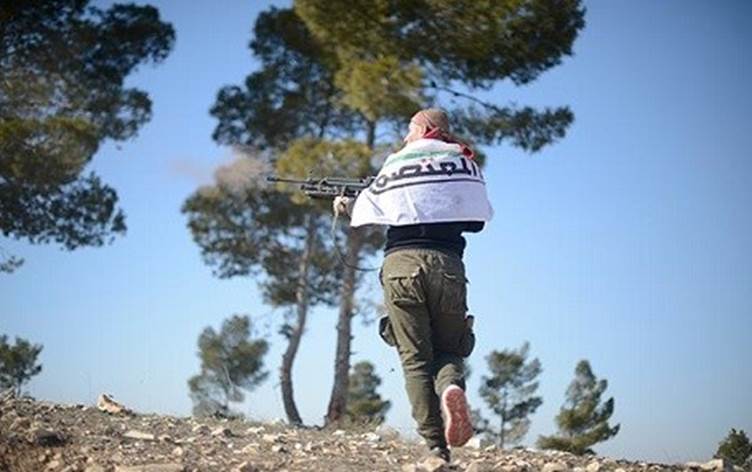Over three months ago, November 6, Turkey, along with its Free Syrian Army (FSA) proxy militia, launched its offensive against the ISIS-occupied city of al-Bab in northwestern Syria. Since then they have been fighting heavy ISIS resistance to their siege.
Al-Bab is 50 kilometers southwest of Manbij. Both cities had pre-war populations of over 50,000 and are of comparable size. Nevertheless, when the Kurdish-led Syrian Democratic Forces (SDF) launched their offensive to rout ISIS from Manbij, it took, altogether, three months: from May 31 to August 27. The city fell to the SDF on August 12 and the subsequent two weeks were spent clearing ISIS out of Manbij's southern countryside.
How is it that the Turkish Army and its allied FSA militia are taking longer to capture al-Bab from ISIS than it took the SDF to capture Manbij?
Possible answers to that question range from a lack of willingness on Ankara's part to take major steps forward in al-Bab during the Obama administration's last weeks in office until it could assess the new Trump administration, to the limited capabilities of the present Turkish military in Syria and the various forces involved in this siege.
“In al-Bab, it seems extra complicated because the Turks are trying to coordinate with many others,” David Pollack of the Washington Institute told Rudaw English. “Not just with their own local Arab allies, but also Syrian regime and allied Russian forces.”
“Turks also prefer not to go in directly to avoid casualties, which SDF took pretty heavily in Manbij,” he added. “Finally, the more ISIS is pushed back, the more desperate it gets while using fighters moving in – so it becomes a harder fight.”
The SDF had consistent US-led coalition air support throughout their offensive. The Turks have not after the US stopped providing them air support when they advanced to al-Bab, which Washington deemed too far south of the Turkish border – where the US was previously supporting Turkey's offensive against ISIS.
Also, for a week in November Turkish jets ceased entering Syrian airspace to support the al-Bab offensive since Damascus threatened to shoot them down. They were only able to continue after Ankara consulted with the Russians.
“Delta force and US air power are awesome things and the YPG/SDF is a coherent and unified group under the control of one man, who can direct his forces where the US tells them to go,” noted the Atlantic Council's Aaron Stein, whose areas of expertise include US-Turkey relations. “Turkish targeting is not comparable, the operation was under resourced, and the rebels fighting alongside them are fractured.”
Turkish air power, especially after the July 15, 2016 coup attempt, is also not comparable with US air power. Given the widespread arrests and detentions of suspected coup plotters in all ranks and branches of the military, Turkey's ability field its entire air force has been significantly degraded. Advertisements in the Turkish press for the country's special forces following the coup attempt also indicate that the Turkish army's manpower has been significantly affected also.
Only last month did the US begin flying air support missions for the offensive in al-Bab after Ankara and Moscow reached an agreement to militarily coordinate their forces against ISIS in that city.
Since launching this Euphrates Shield operation into Syria last August, Turkey has relied on armour and special forces to support its FSA militia numbering at least 3,000. These forces have not proven as effective as the SDF on the ground, especially in urban warfare scenarios where, before even reaching al-Bab, several of them were killed by sophisticated ISIS explosives.
They have also failed to defend some dozen Turkish tanks from ISIS militants wielding anti-tank missiles, leading the Turks to send in more of their own forces to beef up their ground assault force. There are now over 1,300 Turkish troops involved in the al-Bab assault.
Furthermore, since the early days of Euphrates Shield, the FSA militiamen have spoken of their desire to fight the Assad regime in Aleppo rather than focus on ISIS and the YPG in Syria's northwest border region. The SDF on the other hand are fighting in direct defense of their homes against ISIS. Many of the Arab members of the coalition leading the assault on Raqqa likely feel they have a personal stake in liberating their homes from these militants as opposed to the FSA fighters who see fighting ISIS and the Kurds as little more than a sideshow to the uprising they took up arms in six years ago.
Al-Bab is 50 kilometers southwest of Manbij. Both cities had pre-war populations of over 50,000 and are of comparable size. Nevertheless, when the Kurdish-led Syrian Democratic Forces (SDF) launched their offensive to rout ISIS from Manbij, it took, altogether, three months: from May 31 to August 27. The city fell to the SDF on August 12 and the subsequent two weeks were spent clearing ISIS out of Manbij's southern countryside.
How is it that the Turkish Army and its allied FSA militia are taking longer to capture al-Bab from ISIS than it took the SDF to capture Manbij?
Possible answers to that question range from a lack of willingness on Ankara's part to take major steps forward in al-Bab during the Obama administration's last weeks in office until it could assess the new Trump administration, to the limited capabilities of the present Turkish military in Syria and the various forces involved in this siege.
“In al-Bab, it seems extra complicated because the Turks are trying to coordinate with many others,” David Pollack of the Washington Institute told Rudaw English. “Not just with their own local Arab allies, but also Syrian regime and allied Russian forces.”
“Turks also prefer not to go in directly to avoid casualties, which SDF took pretty heavily in Manbij,” he added. “Finally, the more ISIS is pushed back, the more desperate it gets while using fighters moving in – so it becomes a harder fight.”
The SDF had consistent US-led coalition air support throughout their offensive. The Turks have not after the US stopped providing them air support when they advanced to al-Bab, which Washington deemed too far south of the Turkish border – where the US was previously supporting Turkey's offensive against ISIS.
Also, for a week in November Turkish jets ceased entering Syrian airspace to support the al-Bab offensive since Damascus threatened to shoot them down. They were only able to continue after Ankara consulted with the Russians.
“Delta force and US air power are awesome things and the YPG/SDF is a coherent and unified group under the control of one man, who can direct his forces where the US tells them to go,” noted the Atlantic Council's Aaron Stein, whose areas of expertise include US-Turkey relations. “Turkish targeting is not comparable, the operation was under resourced, and the rebels fighting alongside them are fractured.”
Turkish air power, especially after the July 15, 2016 coup attempt, is also not comparable with US air power. Given the widespread arrests and detentions of suspected coup plotters in all ranks and branches of the military, Turkey's ability field its entire air force has been significantly degraded. Advertisements in the Turkish press for the country's special forces following the coup attempt also indicate that the Turkish army's manpower has been significantly affected also.
Only last month did the US begin flying air support missions for the offensive in al-Bab after Ankara and Moscow reached an agreement to militarily coordinate their forces against ISIS in that city.
Since launching this Euphrates Shield operation into Syria last August, Turkey has relied on armour and special forces to support its FSA militia numbering at least 3,000. These forces have not proven as effective as the SDF on the ground, especially in urban warfare scenarios where, before even reaching al-Bab, several of them were killed by sophisticated ISIS explosives.
They have also failed to defend some dozen Turkish tanks from ISIS militants wielding anti-tank missiles, leading the Turks to send in more of their own forces to beef up their ground assault force. There are now over 1,300 Turkish troops involved in the al-Bab assault.
Furthermore, since the early days of Euphrates Shield, the FSA militiamen have spoken of their desire to fight the Assad regime in Aleppo rather than focus on ISIS and the YPG in Syria's northwest border region. The SDF on the other hand are fighting in direct defense of their homes against ISIS. Many of the Arab members of the coalition leading the assault on Raqqa likely feel they have a personal stake in liberating their homes from these militants as opposed to the FSA fighters who see fighting ISIS and the Kurds as little more than a sideshow to the uprising they took up arms in six years ago.




Comments
Rudaw moderates all comments submitted on our website. We welcome comments which are relevant to the article and encourage further discussion about the issues that matter to you. We also welcome constructive criticism about Rudaw.
To be approved for publication, however, your comments must meet our community guidelines.
We will not tolerate the following: profanity, threats, personal attacks, vulgarity, abuse (such as sexism, racism, homophobia or xenophobia), or commercial or personal promotion.
Comments that do not meet our guidelines will be rejected. Comments are not edited – they are either approved or rejected.
Post a comment